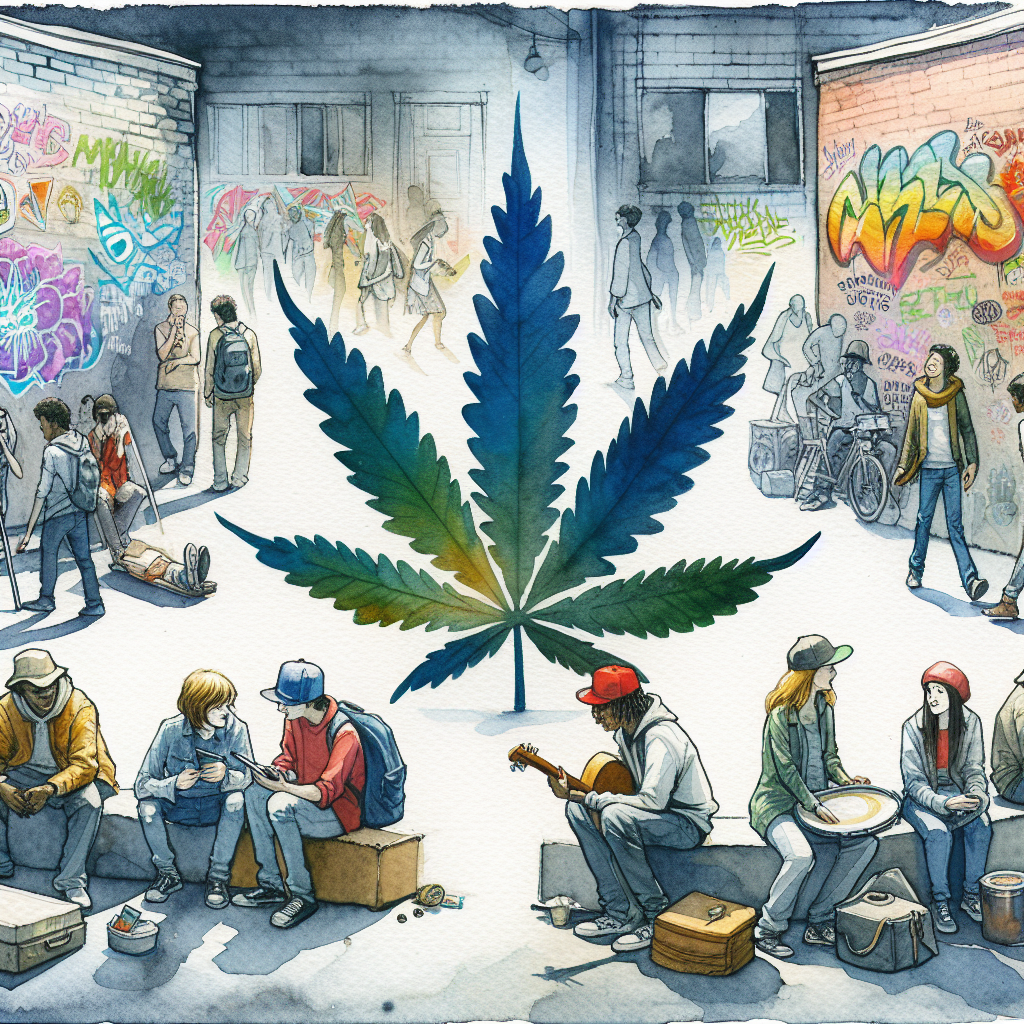Introduction
What if the answer to a young person’s most pressing survival strategies was right under our noses, camouflaged amidst social stigma and misunderstanding? Imagine a substance, long vilified and misunderstood, playing an unexpected role as a lifeline on the streets. The research paper titled “Something that actually works”: Cannabis use among young people in the context of street entrenchment digs deep into this very scenario. It explores cannabis not merely as a recreational escape but as a pivotal part of the daily lives of homeless youth in Vancouver, Canada. These young individuals navigate a landscape fraught with danger, substance use, and mental health dilemmas. At the heart of it, cannabis emerges not as a cure-all but as a partner in harm reduction and survival. This research takes the road less traveled by not focusing solely on the recreation aspect but delving into how cannabis is significantly woven into the tapestry of life on the streets, offering more than meets the eye. As we explore this complex narrative, we’ll uncover the intricate ways in which cannabis becomes a tool for resilience and a potential alternative to more harmful substances.
Turning the Tide: Revelations from the Streets
The study unearthed fascinating insights into the ways cannabis is woven into the lives of street-entrenched youth. Many participants recounted using cannabis daily, more often than not, as a way to buffer against the more perilous pull of substances like alcohol, opioids, and methamphetamine. Far from being another recreational pastime, cannabis emerged as a therapeutic ally. Several youths shared how cannabis provided a sense of mental wellness that was both elusive and desperately needed, a claim that traditional pharmaceuticals often fell short of accomplishing. Consider a young individual caught in the vicious cycle of fentanyl use — a harrowing scenario, indeed. For them, cannabis offered moments of respite, a semblance of equilibrium in an otherwise chaotic reality.
Interestingly, none of the participants viewed their cannabis use purely as a recreational activity. Instead, they framed it as a healthier, more effective alternative to the extended use of psychiatric medications or substance use treatments like opioid replacement therapies. This perspective underscores a larger narrative about autonomy and choice in personal health management. However, not all feedback was glowing. For some, intensive cannabis use came with its own set of challenges, painting a nuanced picture of its role in street life. These findings open a new chapter in understanding cannabis beyond mere consumption and delve into its potential, if controversial, role in self-directed health strategies among youth.
Navigating Complexity: Beyond the Study’s Lens
As the world grapples with the dual challenges of drug addiction and homelessness, this research paper offers a fresh perspective by spotlighting the nuanced role cannabis can play. Historical narratives often reduce cannabis to a simplistic dichotomy of good versus bad. However, this research disrupts that binary by highlighting cannabis as a multifaceted tool in the arsenal of street life survival. For decades, quantitative studies have scrutinized the impact of cannabis, but seldom through the qualitative lens focused on youthful street dwellers. This study crucially shifts the narrative, urging policymakers to rethink the conventional wisdom on substance use and mental health interventions.
Let’s examine how this study intersects with previous research. Past studies largely centered around adult demographics or were heavily numeric, missing the contextual richness captured in Vancouver’s street scene. The research at hand argues that cannabis can provide a modicum of control over one’s mental and physical state, something many traditional treatments struggle to deliver effectively. Anthropological triangulation enriches these findings, suggesting the benefits are not mere anecdotes but part of a broader socio-cultural response to adversity. That said, the potential for harm due to excessive use reminds us that cannabis, much like any tool, can be double-edged. Thus, while it offers solace for some, it may also usher in new difficulties, requiring a balanced view.
From Streets to Solutions: Cannabis as a Practical Ally
So, what does this all mean for us? How can these insights be translated into real-world applications? Firstly, this study suggests a paradigm shift in how mental health solutions should be tailored — especially for marginalized youth. Rather than a one-size-fits-all approach, acknowledging cannabis as part of a broader palette of tools could yield more effective interventions. In the realm of psychology, these findings could lead to developing nuanced mental health strategies that respect individual autonomy and lived experiences.
Moreover, for those working in social services and healthcare, the research offers a poignant reminder of the importance of meeting people where they are. This means truly integrating the voices of street-entrenched youths into policy discussions, understanding that cannabis might be a palatable entry point for more structured interventions. Society often paints a grim picture of street life, but this study reveals unexpected resilience and strategic adaptation among its youth, illuminating pathways to more tailored, compassionate support systems grounded in reality, not ideology.
A Final Thought: Rethinking the Status Quo
This research is not just about cannabis or homelessness, but about understanding resilience and survival in challenging circumstances. It’s a window into how marginalized youth harness available resources in ways that defy conventional logic yet hold immense practical significance. As we move forward, it’s imperative to ask ourselves: are we willing to reconsider our entrenched views on cannabis and its potential roles? Could shifting our perspectives foster environments that are more responsive to the actual needs of vulnerable populations? A creative, compassionate re-evaluation of our approaches may unlock new avenues for support, grounded in the real-world complexities youth face today and tomorrow.
Data in this article is provided by PLOS.
Related Articles
- Understanding the Shadow: Unveiling the Prevalence and Predictors of Suicidal Behaviours Among Adolescents in Mozambique
- Decoding Eyes: Insights into Human Understanding
- Unlocking Emotional Intelligence in Adults with Down Syndrome
- Navigating the Intricacies of the Autism Mind: Unlocking Spatial Memory and Visual Perception
- Healing Minds Amidst Unseen Threats: Understanding the Role of Mindfulness in the Wake of the Fukushima Accident
